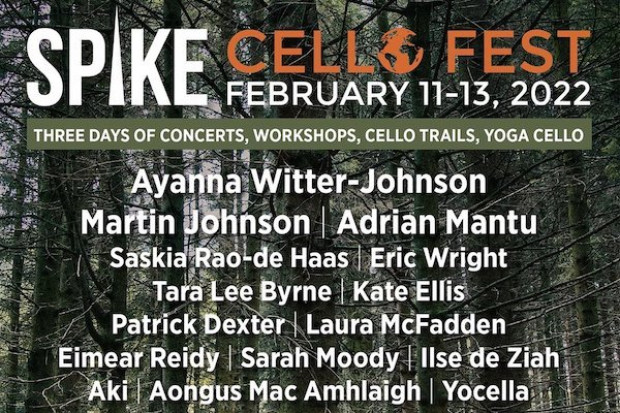
Spike Cello Festival: Saskia Rao-de Haas's Indian Cello
Spike Cello Fest present an interactive workshop on Indian music for stringed instruments with world-renowned cellist Saskia Rao-de Haas
Suitable for all intermediate level string players
Saskia Rao-de Haas is a world-renowned virtuoso cellist, composer, and educationalist from the Netherlands. She was trained as a Western cellist from a young age onwards, but changed direction when she came in touch with Indian music in 1993. She is known as a master performer of Indian classical music and is hailed as the creator of a new instrument: the Indian cello.
Join Saskia for these a workshop designed for the Spike festival where you will discover a few Indian embellishments, glides and intonation, the melodic concept of raga and the rhythmic concept of Tala.
Sound
In Hinduism, sound and music in its highest form are seen as a spiritual practice. The origin of the universe itself in India is described as 'Nada Brahman', or sound is the origin and creator of our universe. This approach to sound reflects in the musicians' approach to music as a form of meditation. The tanpura, drone plays an important role here. It is often said that Indian music is not about the notes themselves but all that happens between them. Like melodic miniature paintings Indian music explores, the smallest variations in intonation in the charateristic glides and embellishments characteristic of the music. In a good glide, both left hand and right hand need to coordinate together seemlessly. In this class, we will look at:
1. What happens when we ditch the vibrato? What expressions can we give a long note in Indian music?
2. Intonation practice: awareness and playing with micro-tonal variations
3. Glides: how to make a beautiful sounding glide?
Raga
The raga is at the core of Indian music. Without going to much into the deep and extensive theory, in this class we introduce you to the concept of raga and play a simple, pentatonic raga as a start for modal improvisation. If you have also done the first class, you will be able to apply those techniques now.
Tala
The rhythmic structure of Indian music is one of the most complex and structured musical systems in existence today. We will learn an Indian composition and explore rhythmic improvisation structures within. If you have taken the previous two classes, you can apply the knowledge from that class.
Please note that for this class, participants can experience playing the music in a different tuning as well:
violin: G C g c ( the strings will be quite loose which makes glides easier)
viola : C G c g
Cello: C G c g ( tune the A and D string 1 note lower)
Double Bass: you can keep your standard tuning or: E (or C) G C G









